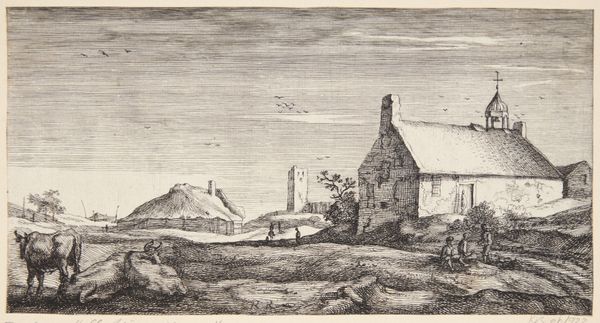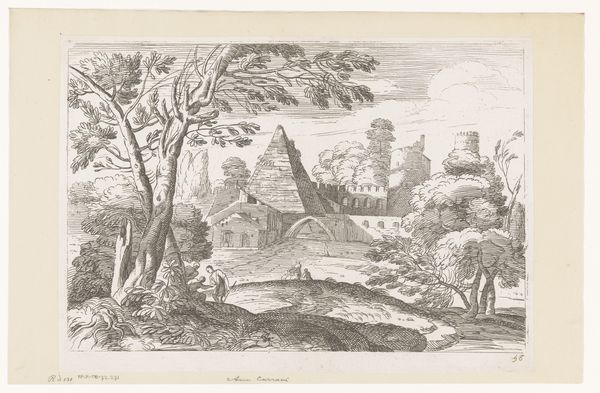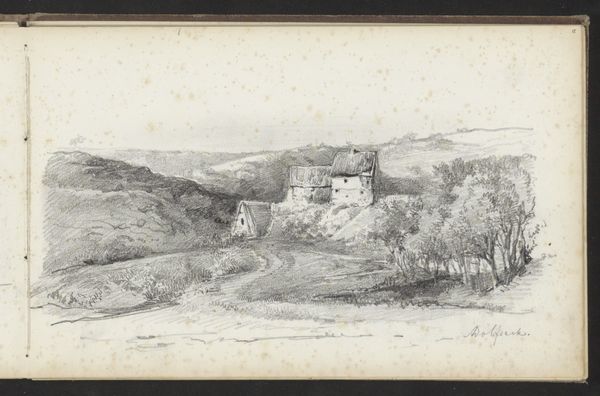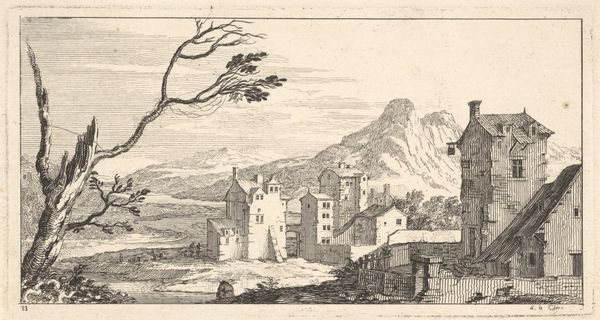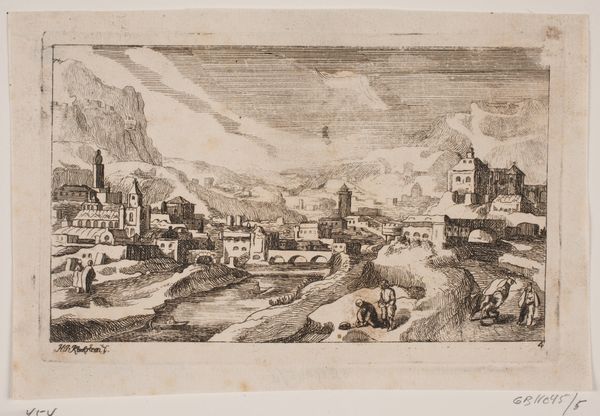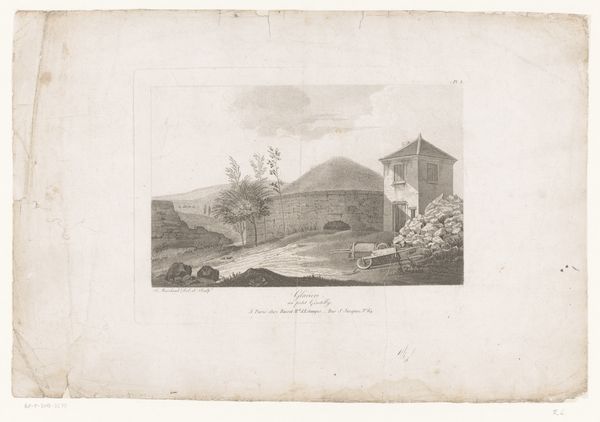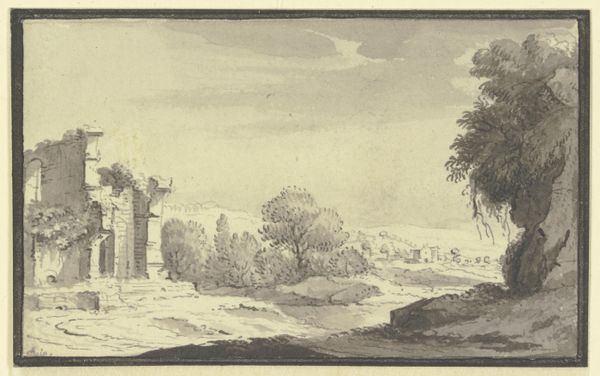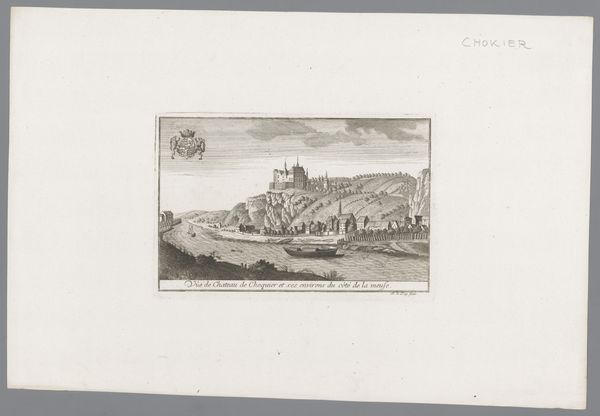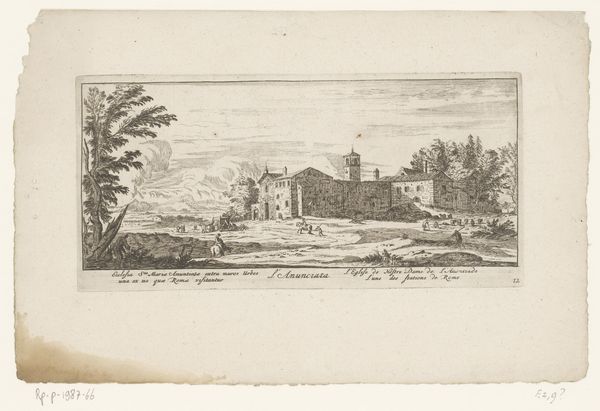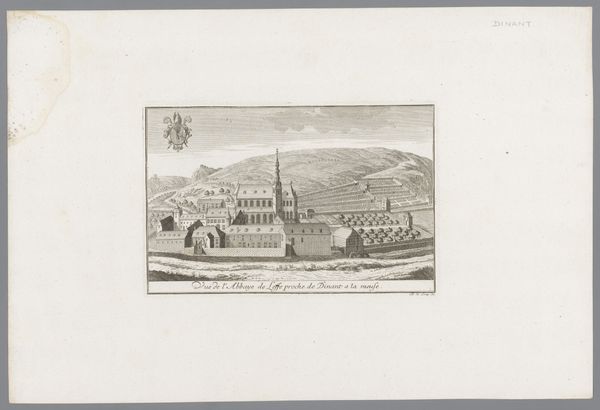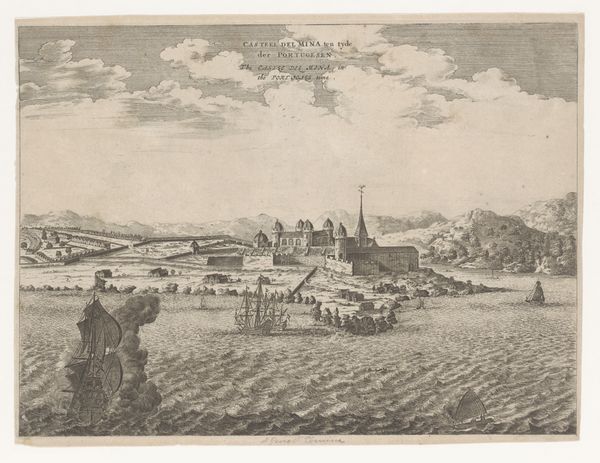
print, woodcut
# print
#
landscape
#
woodcut
#
cityscape
Dimensions: 128 mm (height) x 210 mm (width) (bladmaal)
This print of Hammershus ruins was made by Andreas Flinch, likely sometime in the mid-19th century. It is made by etching, a printmaking process that uses acid to cut into a metal plate, which is then inked and pressed onto paper. Look closely, and you'll notice how the etched lines define every aspect of the scene, from the churning sea to the weathered stones of the ruin. These lines aren't just descriptive; they carry the weight of the image, almost like the labor embedded in the process itself. The act of etching demands time and meticulous skill. Each line represents a deliberate action. It is a labor-intensive process, where the hand of the artist is indelibly present. The final print, in turn, is a multiple, made for distribution. It is an artwork that speaks of its own making, and the social context in which it was produced. It invites us to consider how value is created through both artistic skill and the mechanics of reproduction.
Comments
No comments
Be the first to comment and join the conversation on the ultimate creative platform.
